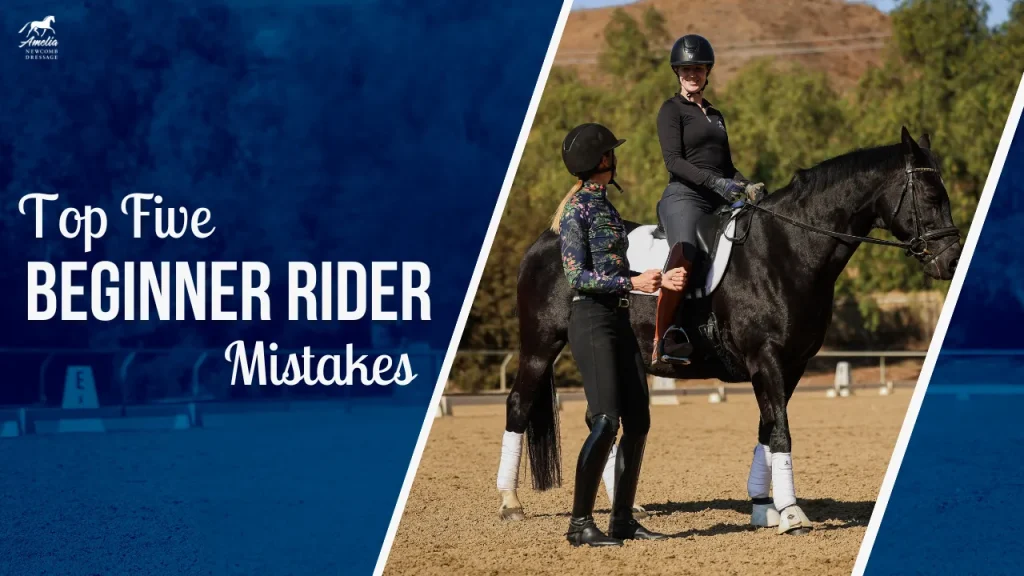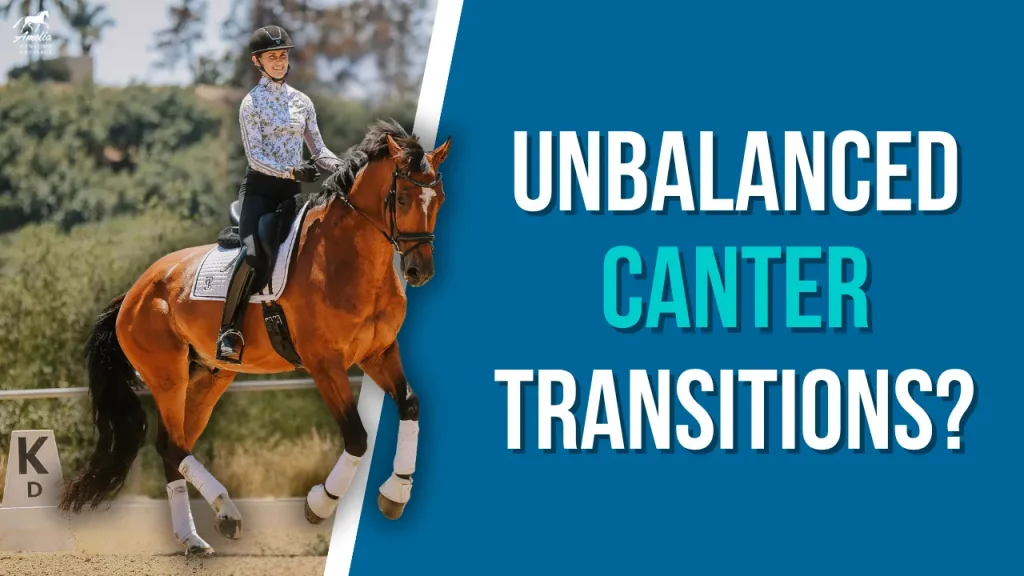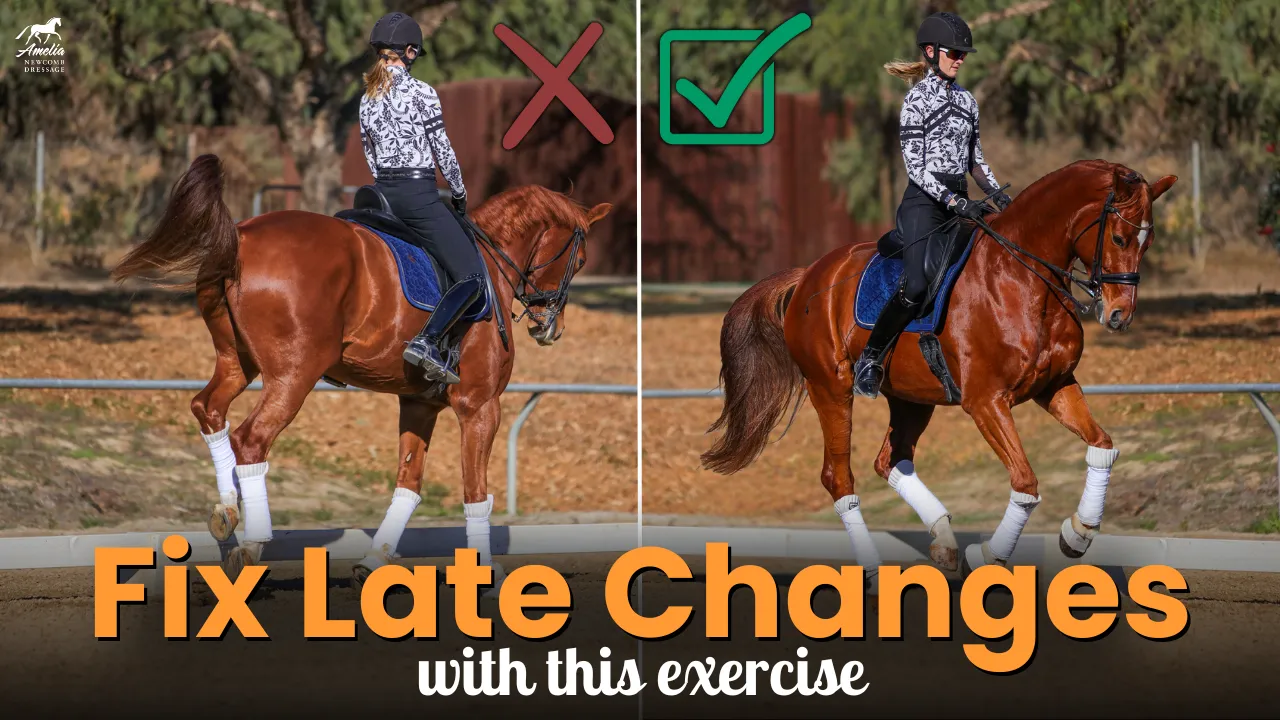
My ‘Train Your Eye with Amelia’ segment is back. This time with rider Cathy from my online community. If you haven’t heard of this series, these are quick 2-4 minute reads with a submitted photo from a real rider in my community. These articles are designed to help train your eye for dressage, rider position, and more while also giving you associated feedback to help the rider (and you if you have the same habits!).
Today we are reviewing a different type of image, big thank you to Cathy for submitting this image to me. Most of my Train Your Eye images (if not all of them!) so far have been on the side profile view of the horse, not straight on in a turn like this one. It’s important for us to learn and identify aspects of riding from all different viewpoints. After all we have judges stationed all around the arena at bigger competitions because every view we see something different. And now, on to what I see.
Overall, this horse looks soft in the eye and mouth and the rider is looking up and around giving clear directions on where to go. That being said, the balance for this horse could use a bit more work. When looking at horses in relation to the earth/ground/footing, we want them to be perpendicular with their body. This horse and rider pair are on about a 10-20% angle to the inside of the turn. This is what we would refer to as ‘falling in’ or ‘leaning in’. It’s important to remember that the balance, posture, and roundness that we need from our horses is directly related to the level of difficulty of movements we are asking them to do. The more difficult the turn or movement, the higher degree of balance needed.
Although I can’t tell the exact ear, hip, heel line exactly from here, I can tell that Cathy is a little ahead of the line because of the way her torso is leaning forward slightly. She’s probably in this position as she’s trying to counter the imbalance of the turn and while it works in the moment to get the job done it doesn’t help the horse develop the muscles and strength to do the turn properly.
So how can we help Cathy with this falling in? Why is this even important? Well, we need to increase the balance of the horse. This is important because if we don’t, the horse is always falling through some of the aids, won’t be as reactive, and will struggle with lateral work and smaller turns because their body won’t be in the correct position to do what is being asked of them! It’s kind of like picking up a box with your back instead of your knees. You can get the job done, but you’ll always be struggling, you’ll expel more energy, you’re at a higher risk of hurting yourself, and you will have a harder time learning the correct muscles. There are a few main things that can help increase the balance.
For her position, we want to bring Cathy’s chest back so it is in a bit more alignment and the horse can balance her weight better. Practicing breathing into the diaphragm is a great way to push that upper body back gently without too much effort from the riders part. Sometimes we get ‘stuck’ in a position and it’s hard to readjust our body without making big changes. Breathing into the diaphragm is simple and effective. I would also love to see her rotate her leg from the hip to have the toe pointed forward, but the priority is on the alignment and balance at the moment.
Second, use the inside leg to make the turns wider for a bit. The smaller the turn, (or the steeper the lateral work), the harder it is for the horse to balance. Going back and making it easier for them will help them focus on staying that upright position and turning by using the inside leg pushing through to the outside rein and bringing the shoulder around after.
Third, turn the saddle not the bridle of the horse. Often times riders learn: right rein to go right, left rein to go left. Which is the initial education yes, but ultimately to move the horse more in balance in turns or lateral movements, we need to steer the shoulders to keep the horse in alignment and correct bend.
Here are some great videos to help Cathy (and you if you have the same falling in struggle):












































